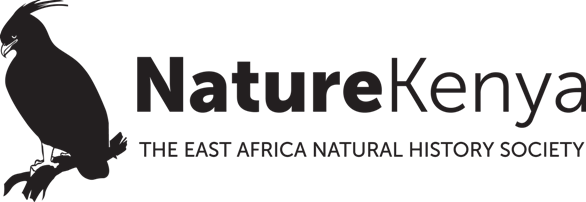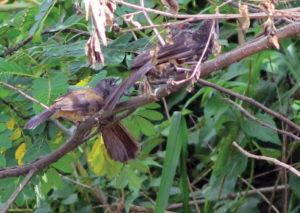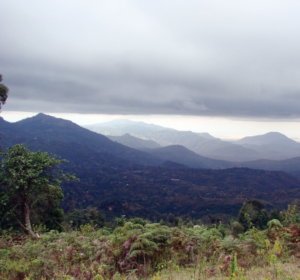
Community exchange visits have always been considered as important strategies that can be applied to promote a practical-based learning approach to some of the best lessons worth replicating. The Lions Guardian model is one such notable approach. This community wildlife conservation initiative encourages “sustainable coexistence” between lions and humans.
The model has successfully managed to blend science with Maasai traditional knowledge and cultural practices to drastically reduced incidents of human-wildlife conflict and minimized cases of retaliatory wildlife killings in Amboseli.
Based on this understanding, Nature Kenya, under a BAND Foundation funded project, organized a visit to Amboseli for a community group from Maasai Mara. The eighteen community members were part of a community exchange visit whose aim was to learn more about the Lion Guardians’ proven community conservation model, as well as gather ideas, lessons and strategies for sustainable coexistence with wildlife from communities that the Lion Guardians is working with. The group comprised of opinion leaders and representatives from various conservation organizations involved in the implementation of human wildlife conflict and poison control related projects within the Mara ecosystem.
The methodology applied for this activity was a practical approach that entailed visiting and interacting with locals in community managed ranches, and conducting field visits to get feel of how wildlife conservation is carried out with minimal interference to human activities as a key objective of mitigating human wildlife conflicts. Like in any other ecosystem where there is direct interaction between human and wildlife, it is expected that there would be conflicting interests as far as utilization of ecosystem services is concerned. In such cases, different communities residing within these ecosystems devise strategies on how to manage conflicts arising from these interactions.
For the Maasai community living around Amboseli National Park, the key approach they have adopted is preserving indigenous culture which promotes co-existence between humans and wildlife. Most of their communally owned land has been divided into ranches, with grazing patterns. The ranches have further been subdivided into different sections for different uses including grazing and conservancies. The communities, under the guidance of their leaders, have developed grazing plans that guide where the communities can graze their livestock at specified times, ensuring minimal conflict with wildlife.
Problematic lions are collared and ‘morans’ using skills acquired on GPS use complemented by their traditional knowledge, keep track of them. This enables them to pin-point the location of the lions and guide cattle grazers away from them. Furthermore, community scouts patrol grazing zones to ensure that cattle herders and wildlife do not cross paths. ‘Moreso’, a Maasai culture of killing lions as a rite of passage, was turned around with the introduction of the Lion Guardians program. The morans have instead been transformed into guardians of lions.
The community also devised ways of ensuring there is a balance in satisfying the needs of all resource users; for instance, local communities have been mandated to ensure that water points (mainly those fed by pumped water from boreholes) have readily available water at night for use by wildlife so as to minimize conflicts.
It is hoped that the delegation from Maasai Mara will replicate some of the lessons they learned to manage human-wildlife conflict and reduce poisoning incidents. After thoughtful review, the community representatives will develop action plans for implementation of the lessons learned.
Among the long term outcomes expected from the visit are to engage local communities in and around Maasai Mara in implementation of non-poisoning control systems for predators, and creating greater public awareness of the vulture crisis and appreciating the role they play in human and wildlife health.
Nature Kenya is implementing the “Saving the African Vulture” Project in the greater Mara Ecosystem. The project seeks to reduce poison related vulture deaths as a contribution towards the halting and long-term reversal of vulture declines in Africa. The vulture crisis is complex and multi-faceted, but poisoning is by far the most important and urgent threat they face. Stopping vulture poisoning is therefore a top priority to enable their numbers to stabilise and build solid foundations required to effectively address other threats they face.

 Following the initial sightings of Hinde’s Babblers at the University of Nairobi’s Upper Kabete Field Station on 26th February (Simon Carter and David Guarnieri) and 8th March 2017 (Nature Kenya Wednesday Morning Bird Walk), marking the first official records of the species in Nairobi, I have been monitoring the birds as I am a student at UoN Upper Kabete Campus. On one occasion while observing the birds with Allan Kipruto (a schoolmate), we got a brief glimpse of what seemed to be a very orange-looking individual in the bushes where the rest of the Babblers (4 adults) were noisily moving around. We suspected it was a juvenile but couldn’t confirm since it quickly went deep into the bush and did not re-emerge.
Following the initial sightings of Hinde’s Babblers at the University of Nairobi’s Upper Kabete Field Station on 26th February (Simon Carter and David Guarnieri) and 8th March 2017 (Nature Kenya Wednesday Morning Bird Walk), marking the first official records of the species in Nairobi, I have been monitoring the birds as I am a student at UoN Upper Kabete Campus. On one occasion while observing the birds with Allan Kipruto (a schoolmate), we got a brief glimpse of what seemed to be a very orange-looking individual in the bushes where the rest of the Babblers (4 adults) were noisily moving around. We suspected it was a juvenile but couldn’t confirm since it quickly went deep into the bush and did not re-emerge.

